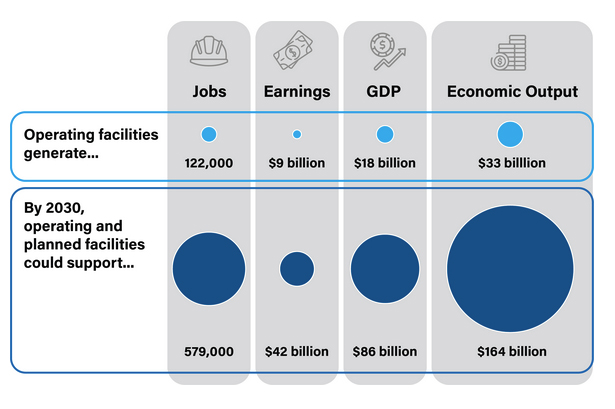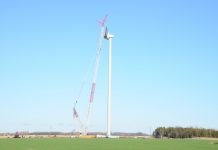The American Clean Power Association released its State of Clean Energy Manufacturing in America report, showing a sustainable ripple effect across states and economic sectors. The clean-power manufacturing sector contributes $18 billion to the U.S. GDP annually, spurs $33 billion in domestic spending annually, and supports 122,000 American jobs across the country.
If all announced manufacturing facilities become operational, clean-power manufacturing is projected to support more than 575,000 jobs and contribute $86 billion annually to GDP by 2030.

“Surging clean energy deployment is creating new manufacturing facilities across the country,” said Jason Grumet, CEO of ACP. “This success will create hundreds of thousands of jobs and revitalize American communities if policy leaders place economic progress over partisan division. “Today’s report shows that the manufacturing activities across the clean-energy sector drive a ripple effect of economic growth that extends far beyond factory walls, reaching every corner of the country. Reshoring this critical supply chain requires a shared commitment by both industry and policymakers to prioritize domestic economic growth and global competitiveness.”
The report illustrates how the industry has laid the groundwork for a secure domestic supply chain, revitalizing manufacturing communities and driving American competition on the global stage.
More than 800 manufacturing plants contribute to the U.S. clean energy supply chain, with at least one in every state; 200 existing manufacturing facilities are actively building primary clean power components across 38 states to supply the booming demand for new energy in America.
New data highlights how clean-power manufacturing is creating generational opportunities at the local level, providing opportunities across skillsets, industries, and generating wages well above the national average.
Clean-energy manufacturing is booming in regions across the country, such as the Southeast, Midwest, and in states like Texas. The clean-energy manufacturing workforce made on average $42,000 more than the average worker in the U.S. economy in 2024.
These manufacturing jobs also generate additional employment across the economy: Upstream supply chain jobs paid an average of $75,000, while downstream jobs supported by household spending — such as those in retail, food service, and hospitality — averaged about $52,000.
The report said that America’s power needs are growing fast — projected to rise 35 to 50 percent by 2040 — as data centers expand, domestic manufacturing rebounds, and transportation and buildings electrify.
























